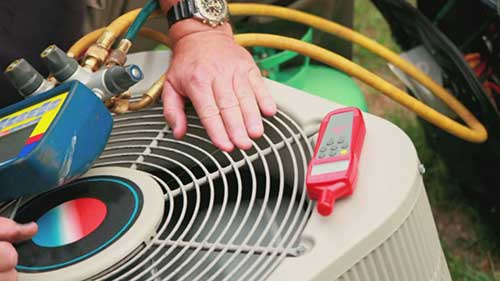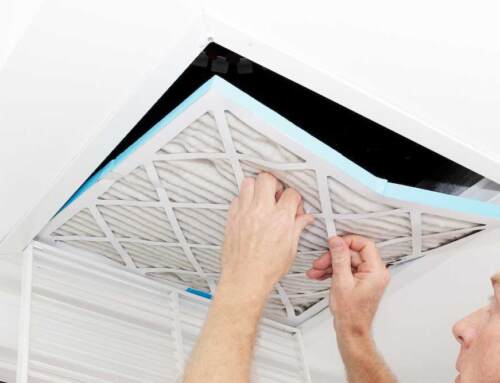
By Bright Ashaka
Alpha 4 Real AC Repair & Service, Katy, TX
Pets are wonderful companions. They bring a lot of joy and fun into our lives. However, the hair and dander they shed can take its toll on the HVAC system.
The good news is that you don’t have to give up your beloved pets in order to keep your heating, ventilation, and air conditioning system in tip top shape and efficiency.
You just have to be more diligent with your HVAC care and maintenance practices.
Observe the following practical HVAC maintenance tips for pet owners and your HVAC unit will perform efficiently and live up to its expected lifespan.
Your family will also enjoy clean and healthy indoor air.
How Do Pets Affect the HVAC System?
Furry pets such as dogs and cuts shed a lot of fur and dander. They also bring dust, pollen and other particles indoors.
All these pollutants float around in the air and end up in the HVAC system.
Without regular maintenance, these particles can build up and affect the efficiency and durability of your heating, ventilation, and air conditioning units.
Cats and dogs can also damage the outdoor unit. Rubbing on it sheds hair and dander into the system while urinating on it can damage the components of the condenser unit.
Finally, a doggie or kitty door can create a weak point through which warmed or cooled air escapes to the outside. This can cause your HVAC system to work harder than necessary and draw more electricity.
If you’ve installed a doggie or kitty door, make sure it’s caulked and sealed properly to prevent conditioned air from escaping.
Tips to Maintain Your HVAC System as a Pet Owner
- Brush and Groom Your Pet Regularly
- Vacuum Your Floors and Furniture Regularly
- Clean or Change Air Filters More Frequently
- Use Higher Rated Furnace Air filters
- Keep the Air Ducts Clean
- Build a Fence Around the Outdoor Unit
- Invest in Professional HVAC Maintenance Twice a Year
As a pet owner we know you love your furry friends and wants the best for them. Below are seven practical tips that will allow you to continue to enjoy your pet and have a functioning air conditioning system for years to come.
1. Brush and Groom Your Pet Regularly
Brushing and grooming your furry pet regularly is the best way to keep pet hair and dander out of your HVAC system.
The loose hair is captured on the brush instead of ending up in the ducts and filter.
On top of this, brushing your pet’s coat and fur often reduces shedding.
The end result is less hair, dander, and dead skin to stress your heating, ventilation, and air conditioning units.
2. Vacuum Your Floors and Furniture Regularly
Another way to reduce the hair and dander that ends up clogging your HVAC ducts and filters is to vacuum your floors and furniture at least twice a week.
Doing this will get rid of the shedding on the floor and furniture before it finds its way into the air system.
Use a flexible vacuum to reach tight corners and under furniture and remove hidden fur.
3. Clean or Change Air Filters More Frequently
Even with regular grooming of your pet and vacuuming of your floors and furniture, some fur and dander will still end up in the HVAC units.
Cats and dogs also bring dirt and pollen into the house.
It’s no surprise that the air filters in homes with shedding pets tend to clog up quickly.
As a result, it’s important to check your filters regularly and clean or replace them more frequently – every two months.
4. Use Higher Rated Furnace Air filters
Does anyone in your home suffer from allergies or respiratory issues? Then it’s important to use air filters with a high MERV (Minimum Efficiency Reporting Value) rating of 10 or 13.
Furnace filters with this rating are highly efficient at trapping allergens like pet dander, which is one of the top allergens in the world.
With such a top-notch filter, you can maintain clean and allergen-free indoor air even when you have pets in the house.

5. Keep the Air Ducts Clean
In a house with shedding pets, it’s inevitable that hair and dander will accumulate in the air ducts and other parts of the HVAC unit.
This can cause allergens to circulate through the house. To prevent this, it’s vital to keep the ducts clean.
Every once month, you can dust the vent covers and open the register covers to vacuum hair and dust out of the exposed ducts.
In addition, you should contact your HVAC contractor to inspect and clean your air ducts every two to three years.
6. Build a Fence Around the Outdoor Unit
The outdoor unit is especially vulnerable to damage by pets. Dogs and cats tend to rub against it thereby sending their fur and dander into your HVAC unit from outdoors.
Even worse, pets can urinate on the condenser unit and the acidic urine can damage the fins and other components. Exposed cables and wires are also pet safety hazards.
The best way to protect the outdoor unit from damage by pets is to erect a fence around it.
Be sure to leave an allowance of 3 feet all around the unit in order to allow adequate airflow.
7. Invest in Professional HVAC Maintenance Twice a Year
On top of applying the above HVAC maintenance tips for pet owners, it’s vital to adhere to routine maintenance of your heating, ventilation, and air conditioning system.
Pet hair and dander can wreak havoc on your HVAC system if you fail to adhere to proper maintenance.
As a pet owner, it’s best to have your HVAC system inspected and tuned up at least twice a year.
A maintenance technician will clean up the system and fix minor issues before they cause major damage.
Wrapping Up
Having furry friends in your home puts extra strain on your HVAC system.
As a pet owner, you need to put in a little more effort to counteract the additional stress on your heating and cooling units.
By following the above HVAC maintenance tips for pet owners and having a professional contractor check and tune up your system twice a year, you will improve the efficiency and longevity of your system and maintain clean and healthy indoor air.






